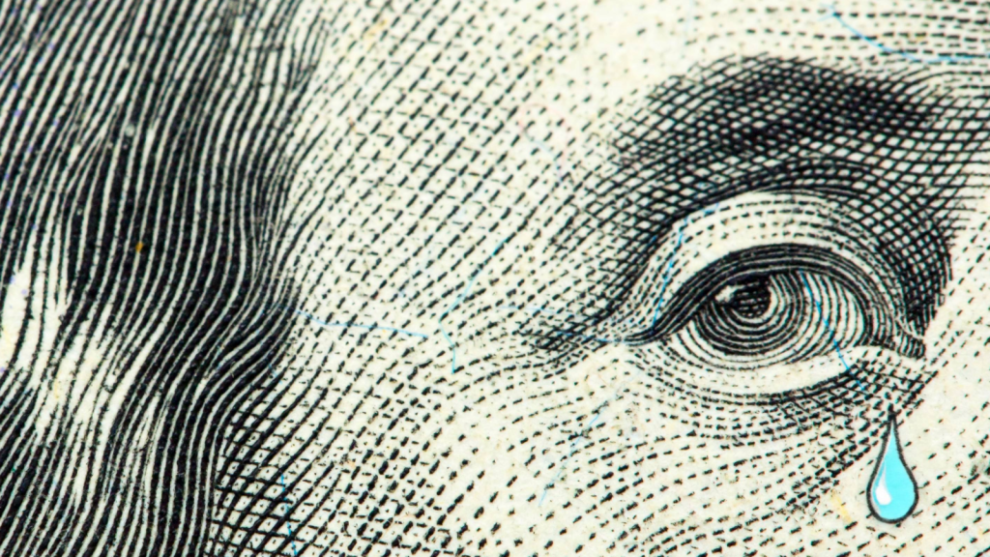
I am bullish on stocks for 2025. In fact, I recently issued my 10 big market predictions for this new year. And one of those projections is that the S&P 500 will rise more than 20% in ‘25 to notch its third consecutive year of 20%-plus gains.
But, even as a bull, I recognize that there are major potential barriers to stocks pushing higher this year. Indeed, one risk in particular could entirely derail this bull market and send stocks crashing lower over the next 12 months.
Now, let me preface this by saying that I don’t think this risk will materialize. But it is worth noting and monitoring nonetheless.
What is this looming threat? Reinflation.
If you’ll recall, throughout 2021 and ‘22, inflation was the big, bad wolf on Wall Street. The U.S. inflation rate surged from 1% in early 2021 to 9% by summer 2022. This forced the U.S. Federal Reserve to embark on its most aggressive rate-hiking campaign in about 50 years. Interest rates and Treasury yields surged. The economy slowed, and stocks spiraled into a bear market.
But ever since the summer of 2022, that problem has been getting “fixed.”
That is, from summer 2022 to late 2024, the inflation rate steadily dropped from 9% to below 2.5%. The Fed stopped hiking rates and started cutting them instead. Treasury yields and interest rates dropped. The economy strengthened, and stocks soared.
The general consensus is that this will continue in 2025.
Inflation should continue to gradually trend lower, allowing the Fed to keep cutting interest rates. That will push lending rates and Treasury yields lower, thereby strengthening the economy and helping to push stocks higher.
I think that’s exactly what will happen.
But there is also a chance that the opposite will occur.
If Inflation Keeps Rising…
To be sure, there is a risk that inflation doesn’t keep trending lower. And if that happens, it could very well mean bad news for the stock market.
Indeed, recently, inflation has stagnated. While it declined pretty steadily from 9% in June 2022 to 2.5% in September 2024, it has actually been rising over the past few months. In October, the inflation rate rose from 2.5% to 2.6%. In November, it rose from 2.6% to 2.8%. And real-time estimates suggest that it will rise again to 2.9% in December.

In other words, we are currently looking at a streak of three consecutive months of rising inflation.
Now, these increases are small. It doesn’t look anything like the spikes we saw in 2021 and ‘22. This is more of a crawl higher.
But what if that crawl starts to pick up speed?
That’s a very real possibility.
As you may know, since more transportation and production costs are reliant on oil, oil prices are a huge input into the larger inflation picture. And oil prices have been on a pretty big upswing over the past month, jumping from $67 to $74 per barrel.
It also appears that the economy is strengthening right now, driven by a strong rebound in consumer and business sentiment in the last few months of 2024. This led to a record-strong holiday shopping season. But all that extra spending has created some unwanted inflation pressures.
This past week, for example, the Institute for Supply Management’s widely followed Services Sector Survey reported a massive jump in its December Prices Paid index – historically a very strong proxy for inflation – to its highest level in about a year.

Reinflation pressures are clearly heating up.
And this is before any new tariffs have even been enacted.
A Political Limbo
On the 2024 campaign trail, President-elect Donald Trump promised expansive and significant tariffs. While it remains to be seen how much of that campaign talk will turn into political walk, this week, Trump did strongly refute a Washington Post report suggesting that he will go “light” on tariffs. Since then, Trump has consistently harped on the tariff idea in various public remarks.
In other words, it looks like some form of tariffs are coming – potentially weighty ones.
Tariffs could increase costs. Hefty tariffs could significantly increase costs. That would mean more reinflation.
Indeed, after Trump instituted a variety of tariffs during his first term in 2018, the U.S. inflation rate rose about 100 basis points in a matter of months.
If something similar happens this time around, then we’d be looking at an inflation rate of nearly 4% by late 2025. And an inflation rate that high wouldn’t just mean no more rate cuts from the Fed. It may actually mean more rate hikes.
This economy cannot stand any more rate hikes.
Just consider: Mortgage rates are at 7%. And the U.S. housing market is frozen solid, with home sales last year falling to their lowest level since 1995. What happens if mortgage rates spike even higher? The whole housing market could collapse.
The last time that happened was in 2008 – during America’s worst economic recession since the Great Depression.
But it isn’t just the housing market at risk of higher interest rates.
Since financing rates are sky-high, the auto market is frozen solid, too. If those rates keep rising, car sales will collapse.
Not to mention, consumers have also maxed out their credit cards. Total credit card balances in the U.S. hit nearly $1.2 trillion in the third quarter of 2024 – another record high.

Currently, the average APR on all that credit card debt is about 20%. But what happens if all that debt starts getting hit with 30%, even 40% APR?
The Final Word on the Inflation Risk
Point being: The current debt-saddled U.S. consumer cannot handle higher interest rates. But if inflation meaningfully reaccelerates in 2025, higher interest rates is exactly what we will get.
To be clear, I don’t think that will happen. Here’s my base-case outlook instead.
AI-driven productivity gains and increased domestic energy creation should keep inflation on a downward path to 2% in 2025. We will likely see tariffs enacted, though not as expansive as has been promised. The net result should be lower inflation, lower interest rates, and higher stocks.
But the risk of the opposite occuring is real – real enough that we need to be aware and monitor it closely.
Having said that, given our bullish slant, we remain hyper-focused on AI stocks at the current moment.
And to help us find some of the best AI stocks to buy for the new year, we’re looking toward the world’s richest man – Elon Musk – and his AI venture for guidance.
Learn more about xAI now to get your portfolio ready for the months to come.
On the date of publication, Luke Lango did not have (either directly or indirectly) any positions in the securities mentioned in this article.
P.S. You can stay up to speed with Luke’s latest market analysis by reading our Daily Notes! Check out the latest issue on your Innovation Investor or Early Stage Investor subscriber site.






